4 min to read
By Bruno Gavino, CEO at Codedesign
It’s Monday morning, and its like it's Friday (as things are moving so fast). I’m scrolling through the latest campaign dashboards, when something hits me — a client’s new lead doesn’t trace back to a Google click or LinkedIn form, but 100% from a direct recommendation from ChatGPT. It’s a scenario that's become commonplace in 2026. So much so that when I met a peer at a recent SaaS marketing conference, our conversation didn’t start with “What’s your Google ranking?” but “Where do you show up in AI Overviews, LLMs, and chat search?”
Welcome to the era of the 2026 Performance Stack: An interconnected ecosystem where AI-first SEO (OmniSEO), first-party data-powered AI campaign optimization, and transparent revenue attribution aren’t nice-to-haves—they’re table stakes for B2B marketing leaders outperforming the field.
The New Visibility Battleground: OmniSEO and AI Discovery
Not long ago, the SEO playbook meant battling for top Google rankings and winning a featured snippet. Today, the battleground has shifted. 89% of B2B buyers now turn to AI assistants and multi-modal search engines for vendor discovery—from ChatGPT to Google’s AI Overview to business-specific bots.
How AI Changed B2B Buyer Research
For one client—a global SaaS provider—qualified leads began citing “ChatGPT recommended you” instead of Google as their research source. This isn’t an anomaly; it’s a paradigm shift. AI systems now surface brands based on content depth, semantic breadth, and how conversationally relevant you appear—not just where you rank for a keyword.
B2B Buyer Research Flow in 2026
Why OmniSEO Wins
OmniSEO means optimizing not just for Google, but for AI assistants, LLMs, and emerging discovery engines. Visibility tracking tools now monitor your citation frequency in ChatGPT, Perplexity, and even vendor recommendation bots. The brands surfacing in these environments share three common traits:
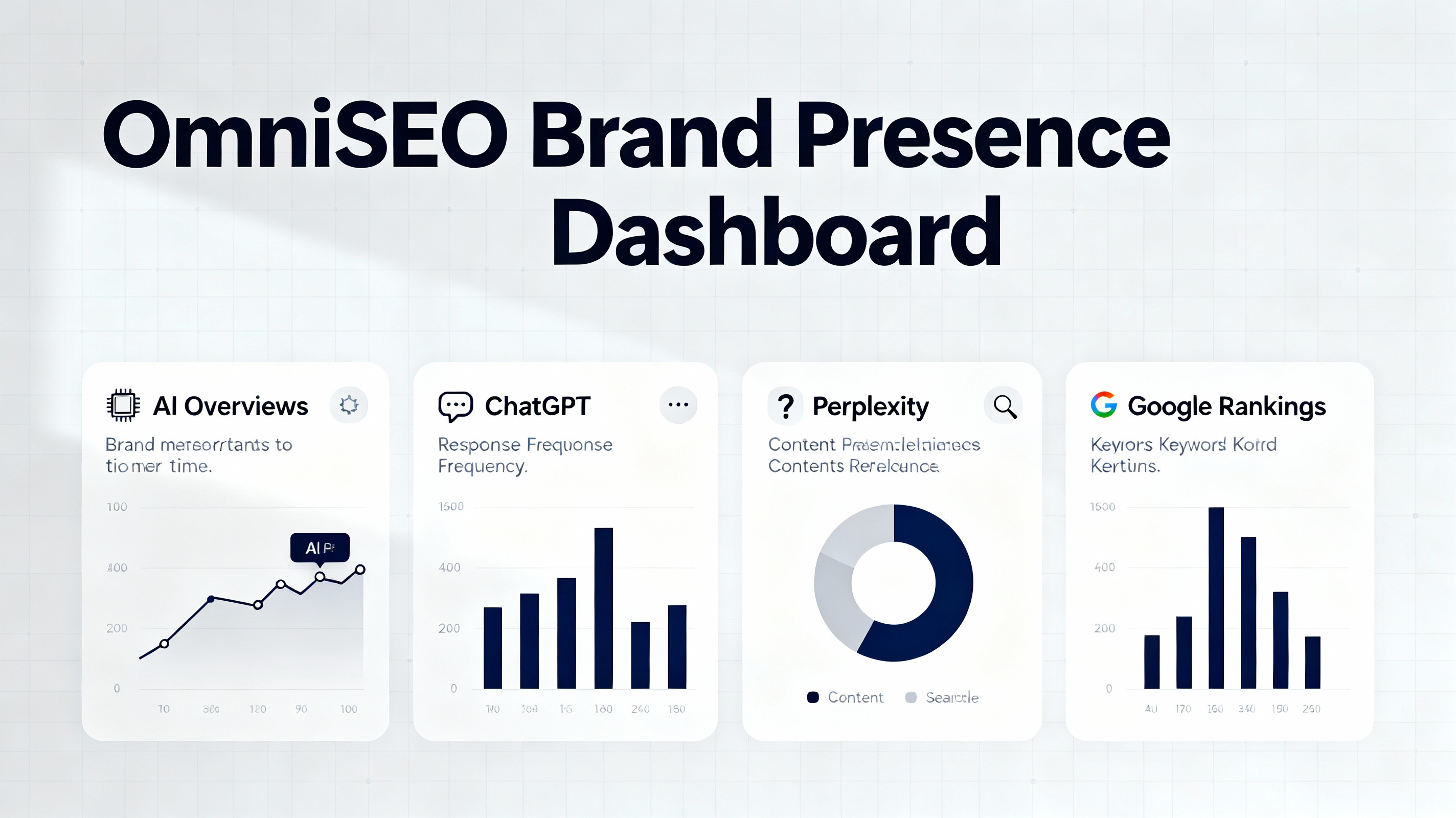
-
Semantic content optimized for AI “query fan-outs”
-
Rich content clusters with strong pillar-supporting page link architecture
-
Entities connected across platforms with consistent, trust-building data
The takeaway: Being “crawlable” isn’t enough—today’s B2B leaders are “citable” and “summarizable” by AI systems, showing up where buying decisions begin, not just where they end.
AI-Driven Campaign Optimization: The Power of Real Audience Intent
This week, while onboarding a new energy-sector client, our team asked: “Where is your first-party data really feeding your campaigns?” Too often, companies run Meta and Google ads in isolation. But the 2026 winners connect the dots: CRM behaviors, website events, and authenticated signals power every major buying touchpoint, enabling true AI-driven optimization.
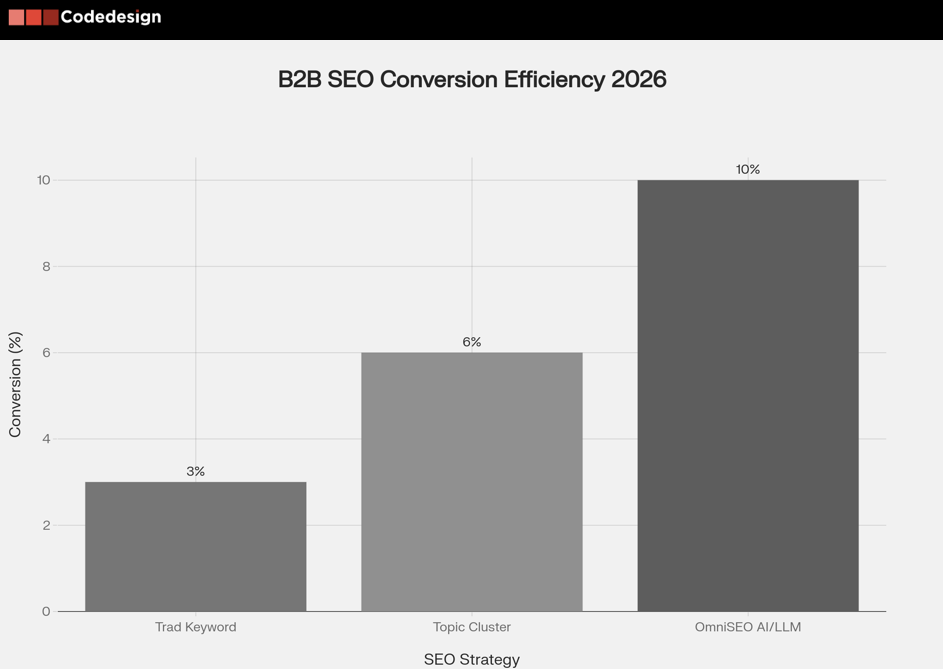
What the Best-in-Class Stack Looks Like
- Google Enhanced Conversions and Meta Conversions API enable every micro-action (demo request, PDF download) to teach the AI what a high-intent buyer looks like
- Audience layering—with CRM fields, website activity, and even offline events—provides hundreds of real-time intent signals
- AI models (Performance Max, Advantage+) dynamically optimize creative, placement, and even messaging sequence based on outcomes, not mere clicks
First-Party Data Integration and Activation
Actionable Strategy
Audit all current data sources (CRM, web analytics, event data). Integrate them via clean consent and privacy workflows. Set up Enhanced Conversions and API feeds so results flow back into the ad engines, sharpening optimization every week. The result: conversion rates climb, and the true buyer profile reveals itself.
Multi-Touch Attribution: Moving From CPL to Revenue-Per-Marketing-Dollar
When reviewing Q3 results for an international B2B SaaS client, one refrain came up consistently: “We spent €400/lead, but which campaign actually drove the deal?” This is the moment B2B attribution finally caught up with how boardrooms measure impact.
Why Revenue Attribution is the New North Star
Multi-touch attribution connects each marketing (and sales) activity—organic AI/SEO, paid media, webinars, nurturing sequences—to the deals that close. Performance stacks leveraging robust multi-touch models distribute revenue credit based on true buyer journeys, letting teams finally optimize for revenue per marketing dollar, not siloed CPL.
ROMI (Revenue per Marketing Dollar) Comparison, 2023–2026
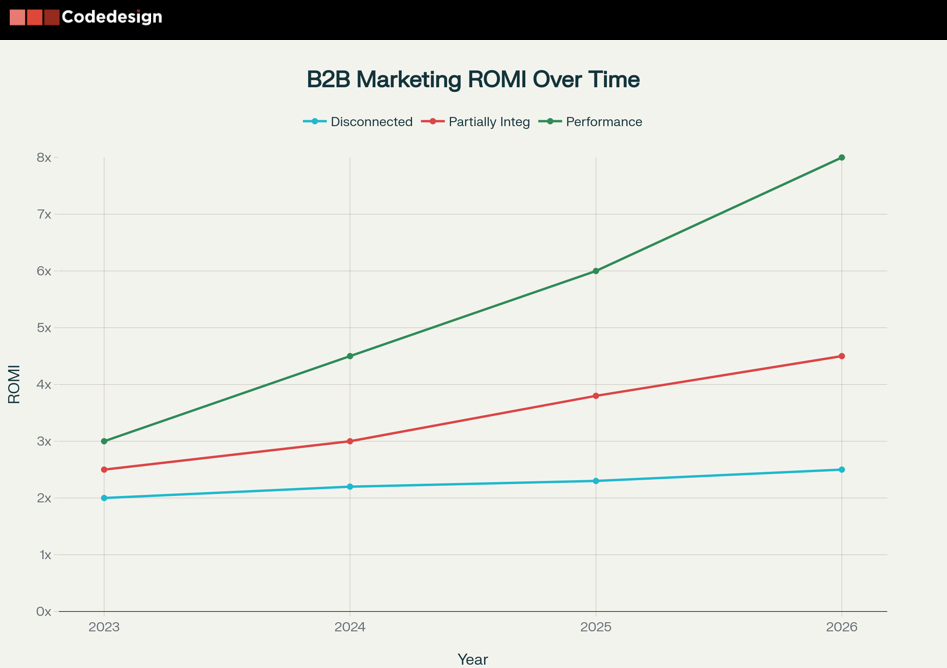
Insight: The 2026 Performance Stack dramatically outpaces legacy point solutions. Integrated stack users see ROMI grow from 3x (2023) to 8x (2026), while disconnected solutions stagnate near 2.5x.
Revenue Attribution by Channel — Typical 2026 B2B Deal
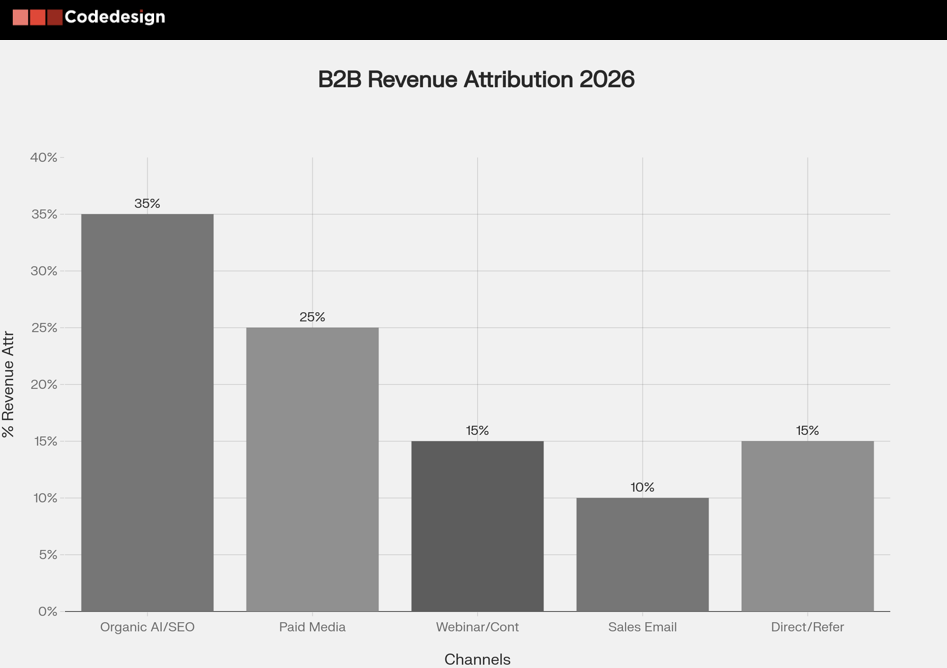
From Point Solutions to Performance Stack: Why Integration Wins
Throughout my client work at Codedesign, one pattern is clear: international B2B brands still clinging to disconnected SEO, paid, and analytics tools are at a loss. Cross-team friction, missing attribution, and siloed KPIs cost real pipeline and revenue. By contrast, those embracing integrated stacks achieve sharper targeting, shorter sales cycles, and more accurate revenue forecasting.
Executive Dashboard: The New Alignment
Imagine a revenue dashboard where marketing and sales teams crowd around the same numbers—ROMI, pipeline contribution, lead-to-revenue conversion rates. No finger-pointing, just mutual KPIs linked to actual business growth.

Actionable Recommendations for 2026 B2B CMOs
1. Build Conversational Content Clusters
Organize all mid- and bottom-funnel content around pillar themes with supporting, conversational articles and FAQs targeting how real users ask questions. Internally link aggressively, and track how often AIs cite your cluster, not just Google rank.
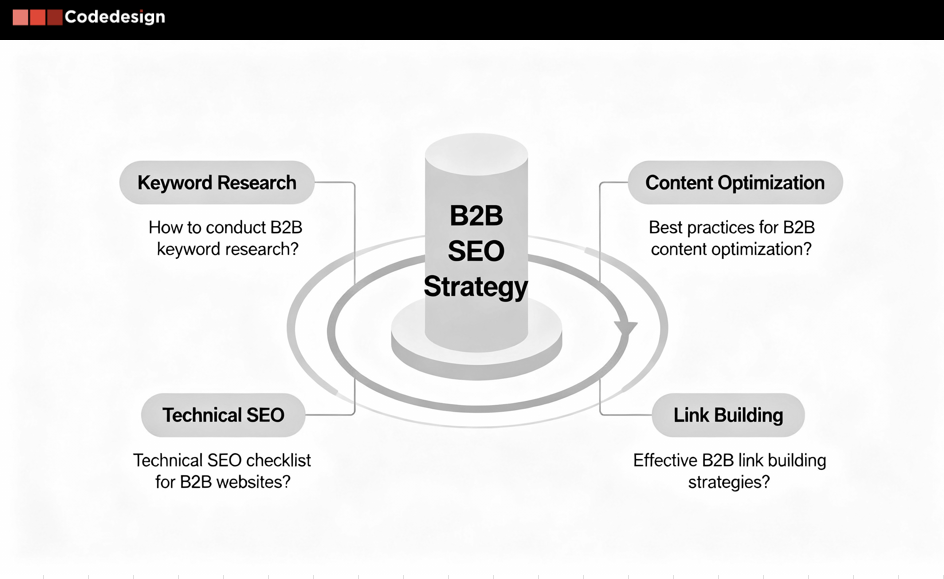
2. Activate First-Party Data and AI Integrations
Deploy Google Enhanced Conversions and Meta/Facebook Conversions API. Make sure every important event (not just purchases!) feeds into ad engines. Integrate CRM and website signals into your campaign management for live optimization feedback.
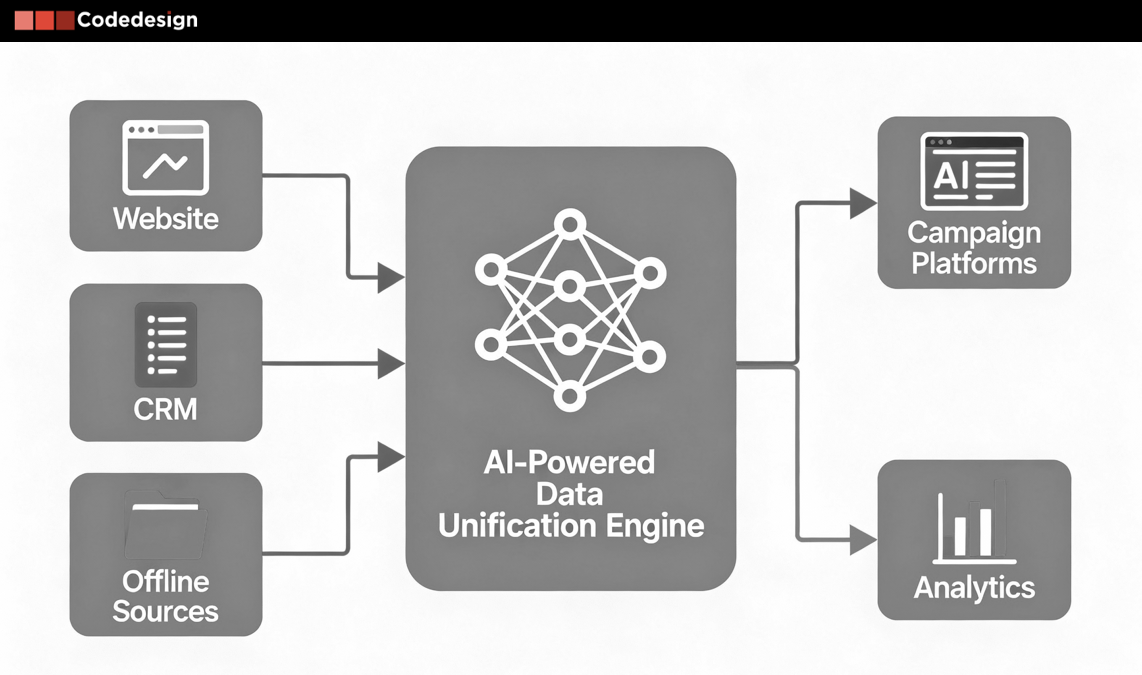
3. Commit to Multi-Touch Revenue Attribution
Break free from last-click or first-touch reporting. Use attribution models and dashboards that link every marketing investment to closed pipeline and revenue—not just leads generated. Move bonus structures and marketing metrics toward revenue impact.
Multi-touch attribution visual showing buyer journey across marketing and sales touchpoints
4. Align Marketing and Sales Goals
Run quarterly alignment sessions. Build a single dashboard for shared KPIs (pipeline influence, conversion rates, revenue per opportunity) and meet weekly to troubleshoot handoffs and messaging gaps.

Takeaways — Lessons From the Trenches
When meeting a client in Zurich this fall, they shared a worry: “We feel we’re always a tech cycle behind.” The hard truth? In 2026, the pace of change only accelerates. But with the right foundation—OmniSEO, integrated first-party data, and robust revenue attribution—any B2B brand can leap ahead, not just catch up.
The brands winning now empower their teams with connected systems, break down silos, and measure what matters: Real, attributable revenue impact.
If you take away one thing: Don’t try to “bolt on” another tool—focus on true integration. The trifecta of AI + OmniSEO + Revenue Attribution is the backbone of tomorrow’s international B2B leaders.
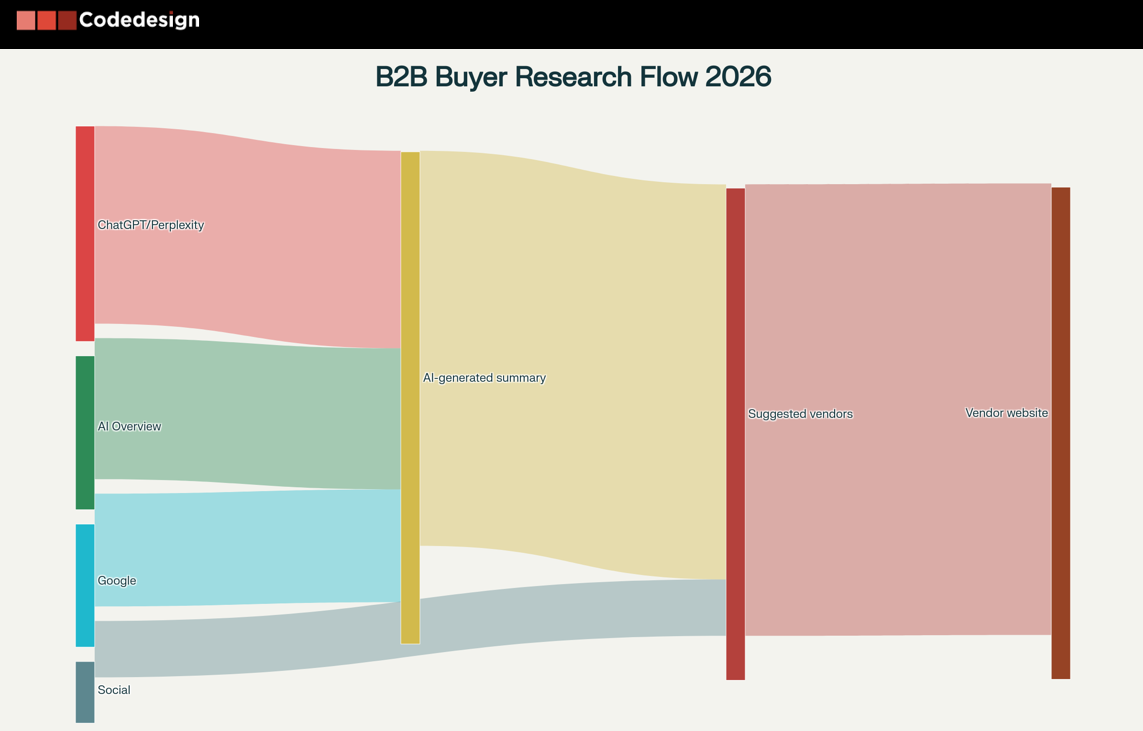
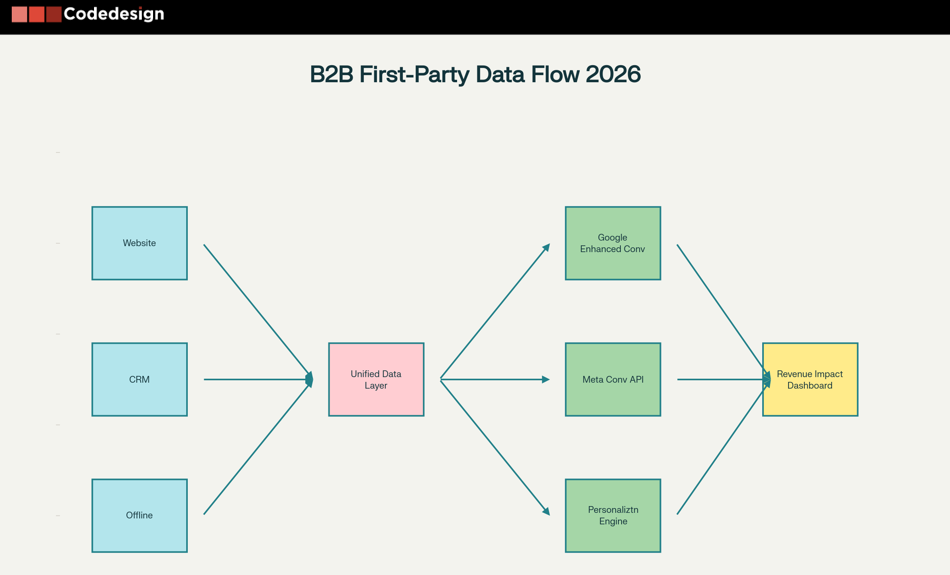



Add comment ×